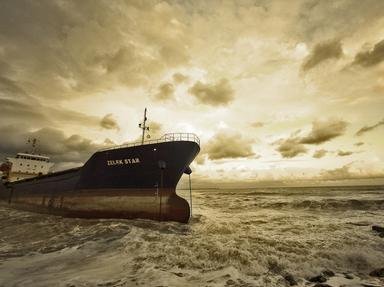Quiz Answer Key and Fun Facts
1. When the SS Edmund Fitzgerald was built in 1958, it was the biggest Great Lakes freighter ever built, a record thought unlikely to be broken. Why?
2. The SS Edmund Fitzgerald had some unique features. Which of the following was *NOT* a feature of the ship or its journeys?
3. The freighter mainly carried taconite from ports in Lake Superior to major cities further downstream on the Great Lakes. What is taconite?
4. The SS Edmund Fitzgerald was a massive ship, yet it plied all its trade within the Great Lakes. What was the final route of the ship?
5. The freighter was barely a day into its journey when a series of events contributed to its ultimate fate. What was the initial event that started the sinking of the Edmund Fitzgerald?
6. On November 10, 1975, SS Edmund Fitzgerald sent out a May Day call at 7.10pm.
7. The search for the missing vessel found rafts and lifeboats. How many of the crew were saved?
8. Was the wreck of the SS Edmund Fitzgerald ever found?
9. What was the accepted cause of the sinking of the SS Edmund Fitzgerald?
10. A permanent memorial to the SS Edmund Fitzgerald was created at Whitefish Point, Michigan. What was the significance of this place?
Source: Author
1nn1
This quiz was reviewed by FunTrivia editor
trident before going online.
Any errors found in FunTrivia content are routinely corrected through our feedback system.
